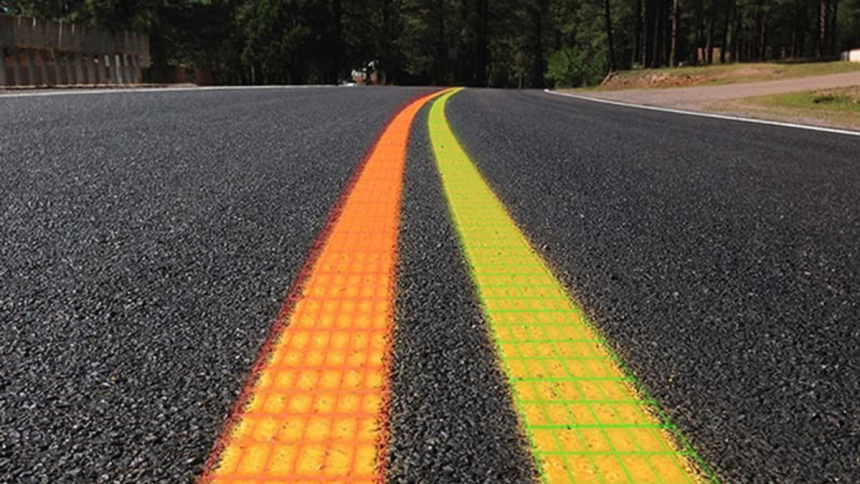Every road carries an unspoken promise: that drivers will be guided, protected, and kept on a safe path. Yet across the country, that promise is quietly breaking down. While flashy headlines focus on distracted driving or speeding, a more subtle but deadly threat persists—infrastructure neglect, particularly in the form of missing guardrails and faded lane markings. These overlooked details can mean the difference between a safe journey and a devastating crash.
When the physical boundaries of a roadway are unclear or unprotected, drivers are left to navigate uncertainty, especially in darkness, inclement weather, or unfamiliar terrain. The consequences are real and often tragic. Faded lines blur direction. Missing guardrails remove life-saving barriers. And when something goes wrong, it’s not just the driver who suffers—it’s passengers, pedestrians, and entire communities left reeling from an avoidable loss.
The Role of Lane Markings in Driver Decision-Making
Lane markings are more than just painted lines—they are vital navigation cues. These lines help drivers maintain their lane, anticipate turns, and stay oriented at night or during heavy rain. When those markings fade, drivers are forced to guess where their car should be, especially at high speeds or on multi-lane roads.
This guesswork can result in dangerous drift, unintentional lane changes, and side-swipe collisions. In rural or poorly lit areas, the absence of clear markings can be outright disorienting, leading drivers to veer off the road or into oncoming traffic. Consistently visible lane markings are not optional—they’re essential to public safety.
The Life-Saving Power of Guardrails
Guardrails are the last line of defense when a driver loses control. Positioned along steep embankments, bridges, curves, or roadside hazards, they are designed to absorb impact and prevent vehicles from plunging into dangerous terrain. Without guardrails, a simple skid on a wet road can quickly turn into a deadly rollover or plunge.
When these barriers are missing, damaged, or improperly installed, drivers are left vulnerable to catastrophic outcomes. Guardrails don’t just prevent crashes—they reduce the severity of those that occur. By keeping vehicles on the roadway or controlling their descent, guardrails dramatically lower the risk of fatal injuries, especially in high-speed or mountainous regions.
Nighttime Driving and Visibility Challenges
Driving at night already poses challenges due to reduced visibility and increased driver fatigue. When lane markings are faded or absent, the risk compounds. Headlights may not reflect off worn paint, leaving drivers with little guidance as to where lanes begin or end.
This is particularly dangerous on highways and rural roads, where lighting is minimal and speeds are high. Drivers can drift unintentionally or fail to see where the road curves, leading to off-road crashes or collisions with oncoming vehicles. Well-maintained reflective lane markings are crucial for safe nighttime travel and preventing visibility-related accidents.
Weather Hazards and Washed-Out Boundaries
Rain, snow, and fog can significantly impair a driver’s view of the road. During these conditions, lane markings and guardrails become even more critical. Unfortunately, wet or snow-covered roads can completely obscure faded markings, leaving drivers essentially blind to the road’s layout.
In slippery conditions, the absence of a guardrail can have devastating consequences. A vehicle that hydroplanes or skids without a physical barrier to stop it may crash into ditches, trees, or other vehicles. Infrastructure designed to withstand adverse weather must be maintained year-round to protect drivers when visibility and control are most compromised.
Who Is Responsible for Road Maintenance?
When an accident occurs due to poor infrastructure, the question of liability becomes key. Local, state, or federal agencies are often responsible for maintaining the roads within their jurisdiction. This includes repainting faded lane lines and repairing or replacing damaged guardrails. Failure to do so in a timely manner may expose these entities to legal responsibility.
Filing a claim against a government agency, however, involves specific legal challenges, such as notice requirements and immunity limitations. Victims need to act quickly and work with attorneys experienced in municipal liability. Holding responsible agencies accountable not only helps compensate victims—it also prompts necessary changes that prevent future accidents.
Disproportionate Impact on Rural and Low-Income Communities
Poorly maintained roads are more common in rural and underfunded areas. These communities often lack the budget or political leverage to demand timely repairs, making their residents more vulnerable to accidents caused by missing guardrails or illegible lane markings.
This infrastructure disparity highlights a broader issue of environmental and social justice. When safety features are neglected in certain regions, the message is clear: some lives are deemed less worthy of protection. Addressing this inequity means ensuring that all communities benefit from properly maintained roads and lifesaving infrastructure, regardless of ZIP code.
Commercial Vehicles and Greater Risk
For commercial truck drivers, infrastructure issues pose amplified dangers. Large vehicles require more space to maneuver and longer stopping distances. When lane boundaries are unclear or guardrails are absent, the margin for error disappears—and so does the opportunity to avoid a crash.
Accidents involving commercial trucks are more likely to result in severe injuries or fatalities due to their size and weight. In these cases, liability may also extend to logistics companies or municipalities that failed to maintain road safety. Drivers of commercial vehicles, as well as the public sharing the road with them, depend heavily on visible markings and physical protections.
Preventative Solutions and Emerging Technology
The good news is that solutions exist. Thermoplastic lane markings, high-visibility paint, and rumble strips can make lines more durable and reflective, while crash-tested guardrails with energy-absorbing designs are constantly being improved. Regular inspections and better funding allocation can go a long way toward reducing crashes linked to infrastructure neglect.
Emerging technology offers even more promise. Smart infrastructure, GPS-linked hazard alerts, and AI-assisted maintenance scheduling can help governments identify and fix problems faster. But until these innovations are universally adopted, the basics—visible lane markings and secure guardrails—must remain a priority in every transportation budget.
Restoring the Roadway’s Promise
Road safety isn’t just about good driving—it’s about reliable infrastructure that protects everyone, from the cautious commuter to the sleepy traveler. Faded lane markings and missing guardrails may not grab headlines, but their absence turns roads into traps. These quiet dangers demand urgent attention, policy enforcement, and public awareness.
When roads are unsafe due to neglect, the responsibility shifts from the individual driver to the system that failed them. By demanding better infrastructure and holding responsible parties accountable, we take an important step toward honoring the promise that roads should guide, protect, and never deceive.
Edward M Bernstein & Associates Accident and Injury Lawyers
Phone: 702) 240-0000
Url: https://www.edbernstein.com/las-vegas-car-accident-lawyer/
10801 W Charleston Blvd #520
Las Vegas, NV 89135
USA
Lynn Martelli is an editor at Readability. She received her MFA in Creative Writing from Antioch University and has worked as an editor for over 10 years. Lynn has edited a wide variety of books, including fiction, non-fiction, memoirs, and more. In her free time, Lynn enjoys reading, writing, and spending time with her family and friends.















